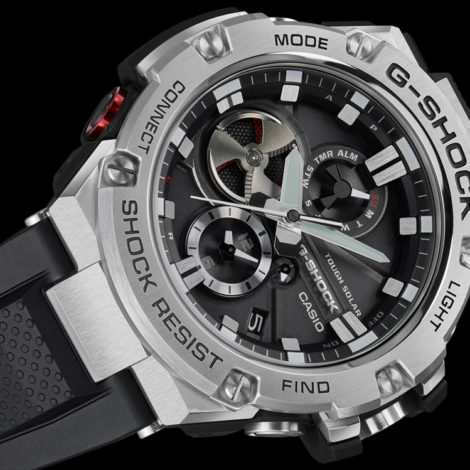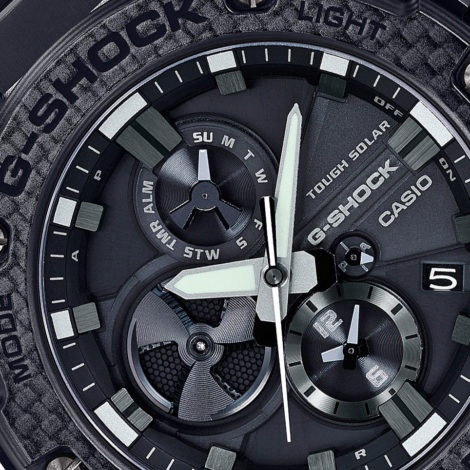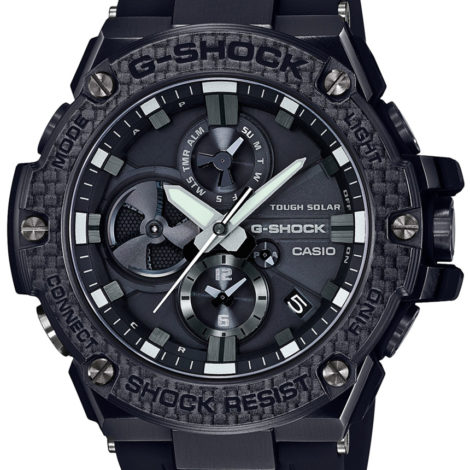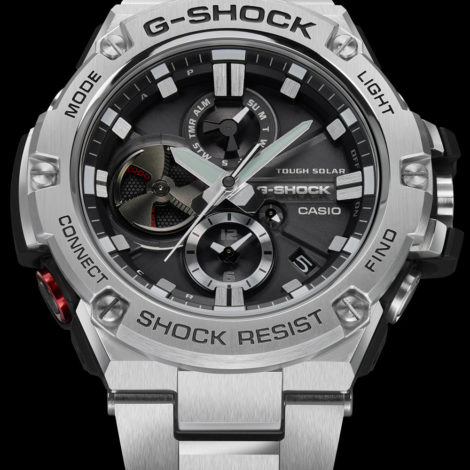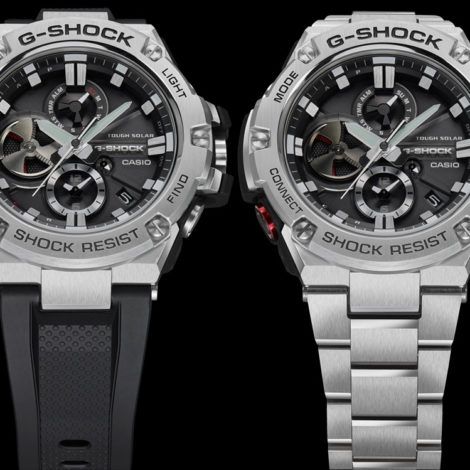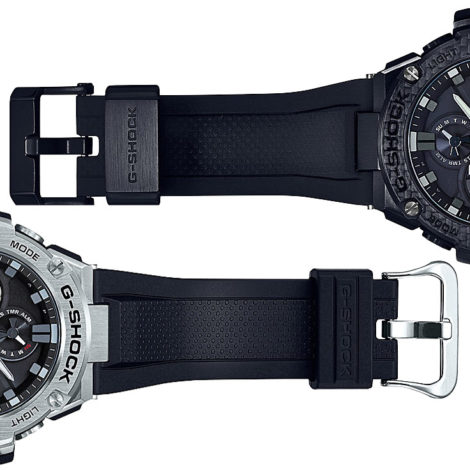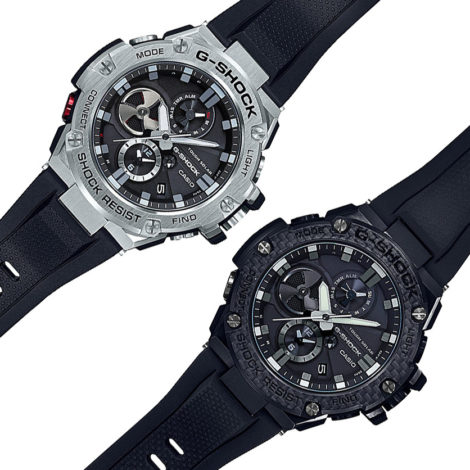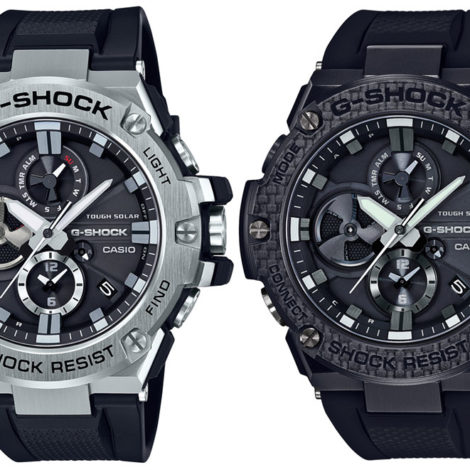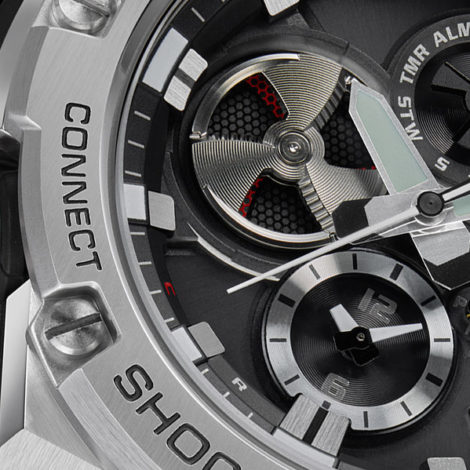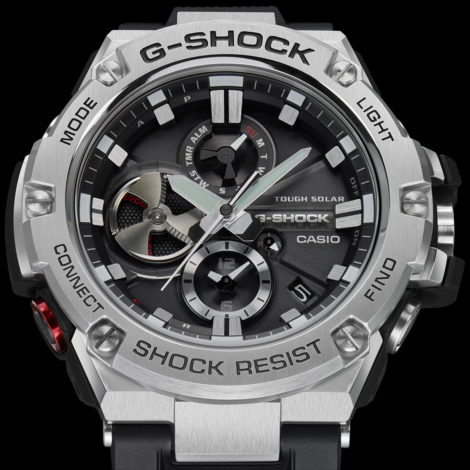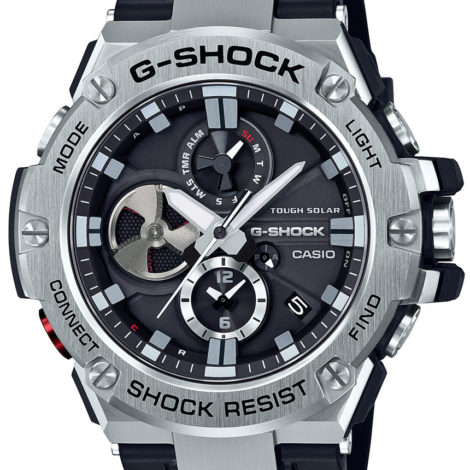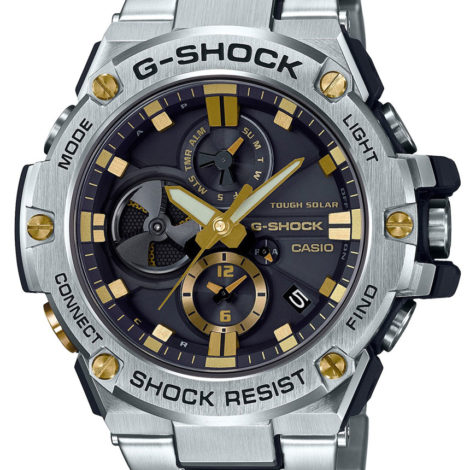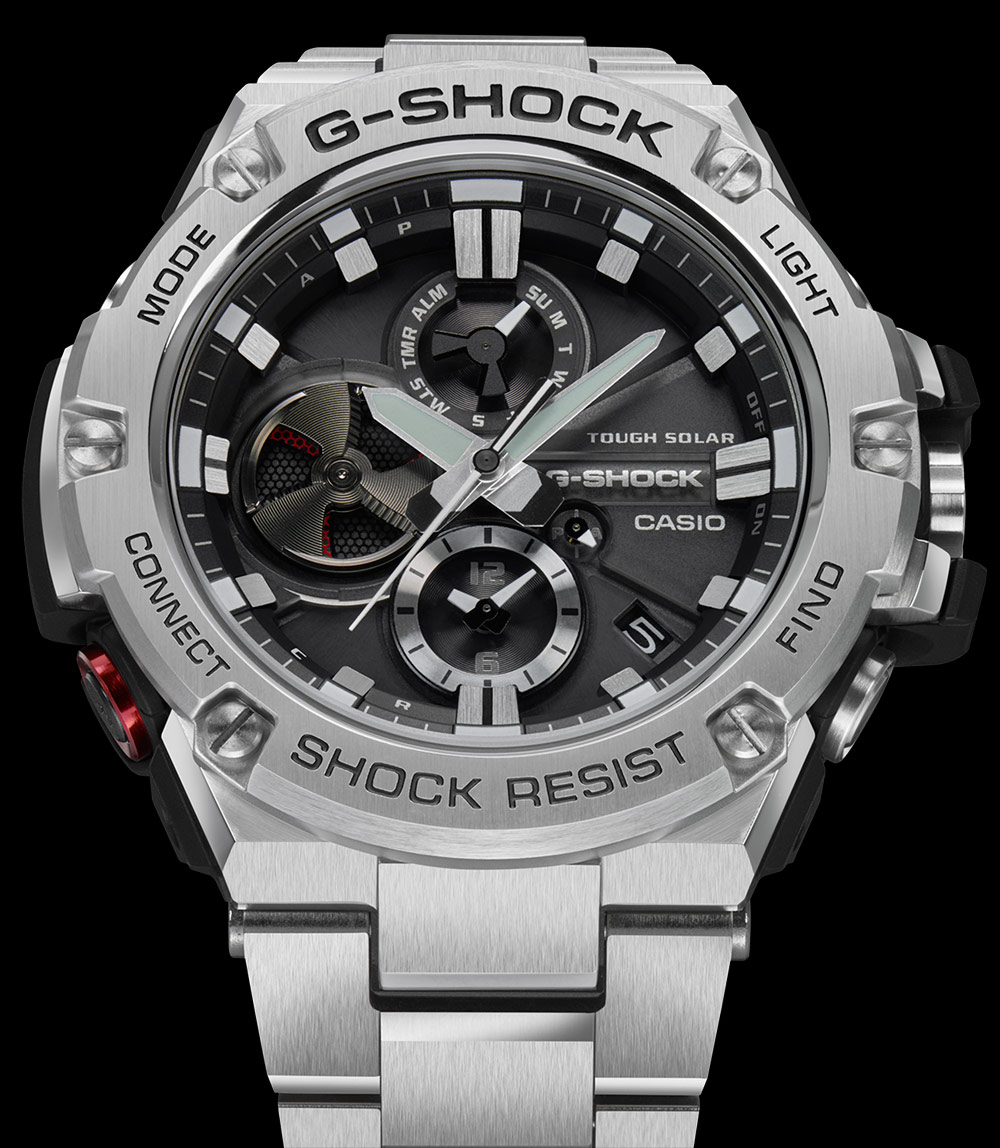
Not too long ago, Casio realized that the market for steel G-Shocks was not so niche after all and began making their higher-end MT-G and MR-G watches more widely available. As Japanese watch makers often like to cast a wide net – seemingly attempting to offer something for every possible taste and budget – the more affordable line of steel G-Shock watches called G-Steel followed, and it continues to grow and evolve. With all-analog displays, and even a more premium “special edition” model, the new Casio G-Shock G-Steel “Tough Chronograph” GST-B100 series now joins the Bluetooth-equipped Casio watches offering connectivity with smartphones.
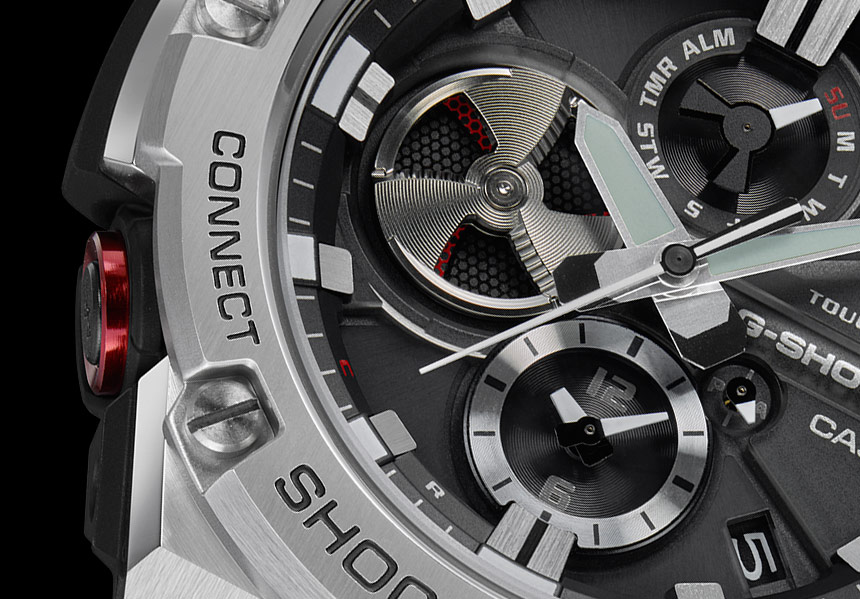
The Casio G-Shock G-Steel “Tough Chronograph” GST-B100 watches use the Bluetooth connection, first, to sync the time with one’s smartphone. This happens four times per day, and it also automatically detects and adjusts when one enters a new time zone. Then, there is an app for controlling various features of the watch, such as alarms, setting a second time zone to display at 6 o’clock, as well as switching the times between the main dial and the second time zone sub-dial. Other functions include a “find my phone” button (at 4 o’clock on the case) and the ability to check the watch’s remaining battery life – the battery is light-charged with Casio’s Tough Solar technology, but this should be a neat feature to play with.
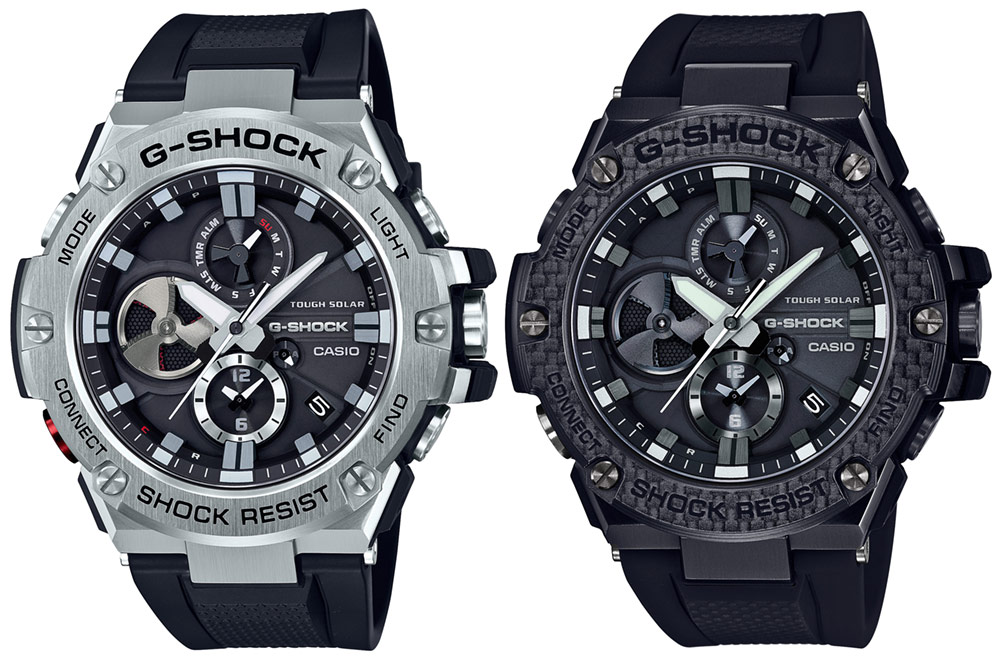
This type of connected watch makes a lot of sense to me – a lot more than my wrist buzzing with notifications or counting my steps (there’s a time and a place for those things) as many connected or semi-smart watches want to offer. We’ve seen similar approaches where many of a watch’s features are controlled via a smartphone, such as with Breitling’s Exospace B55 Connected reviewed here, but it really fits for the G-Shock G-Steel, in my opinion. G-Shock and other Casio watches often have a suite of features controlled by four or five buttons that require a manual to use or learn only to be quickly forgotten. So, as long as it works properly (I’ve not always had the best experiences with Bluetooth), this would seem to make many more of the watch’s functions much more usable. Thankfully, there is also no Bluetooth or other WiFi-looking logo here – just a “connect” text for the 8 o’clock button.
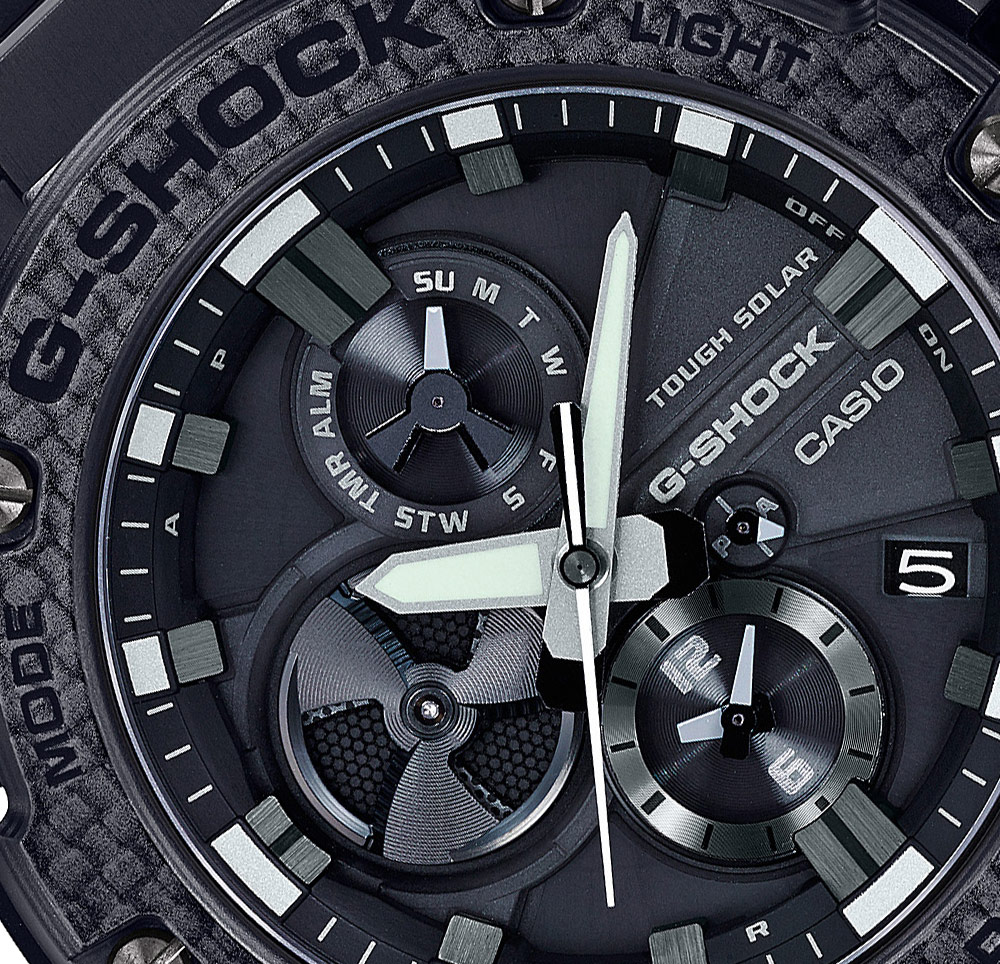
The Casio G-Shock G-Steel “Tough Chronograph” GST-B100 watches also feature some new design traits, but I want to mention the size and dimensions first. Since the initial crop of G-Shock G-Steel watches (GSTS110D-1A reviewed here), the variations have kept coming. The first generation G-Steel was a large 59.1mm by 52.4mm by 16.1mm, and Casio followed up with a thankfully downsized version at 55.9mm by 49.3mm by 15.3mm that was way more comfortable and wearable in my experience. The new connected G-Steel watches are between those two sizes at 58.1mm lug-to-lug by 53.8mm wide, but they are the thinnest yet at 14.1mm thick.
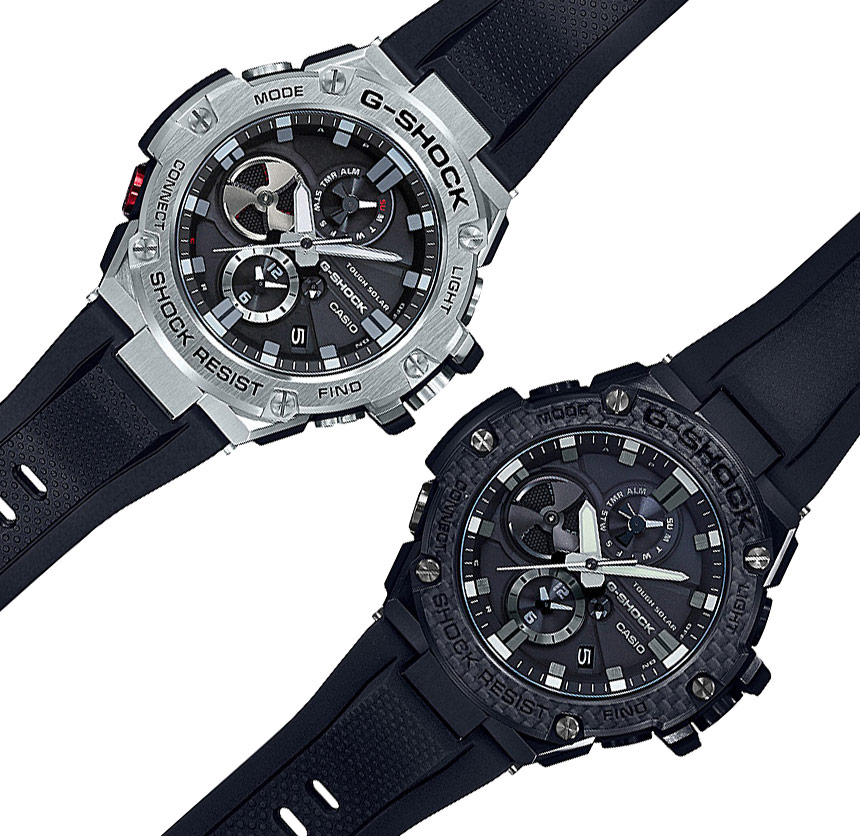
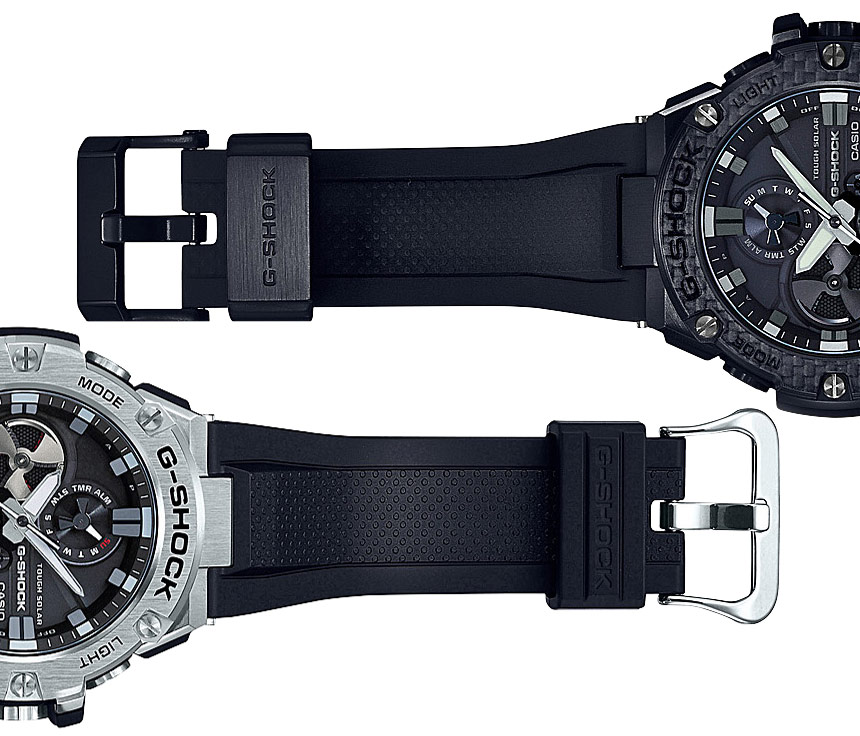
Getting back to the design, this is the first G-Steel that doesn’t have digital displays alongside analog hands. If, like me, you are waiting for an all-digital G-Steel like those cool MR-G watches from the ’90s, we might just have to keep waiting. G-Shock has increasingly gone analog and ana-digi, often saving their “more mature” all-analog G-Shocks for the higher-end models. So these G-Steel GST-B100 watches with relatively restrained, all-analog dials seem to be offering some of the appeal of the MR-G and MT-G watches for a lower price bracket.
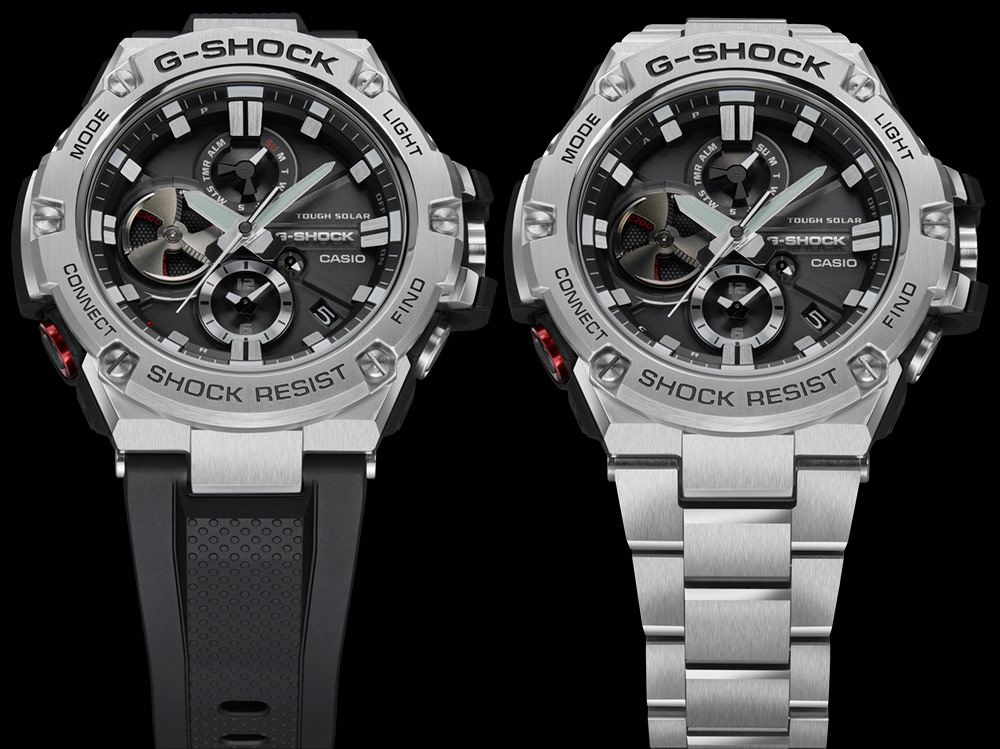
We mentioned the second time zone at 6 o’clock already, and at 1:30 of that sub-dial is a small indicator for am or pm in the second time zone. At 12 o’clock is a sub-dial that indicates different modes (alarm, timer, stopwatch) or the day of the week. Finally, at 9 o’clock is a turbine-inspired “rotary disc.” Between the “blades,” red is revealed to indicate battery level or remaining time on the timer. I’m not really sure why they emphasized its chronograph feature by calling it “Tough Chronograph,” as the “stopwatch” seems to be what is standard on other models, and you have to change the “mode” (10 o’clock button on case) in order to use it.
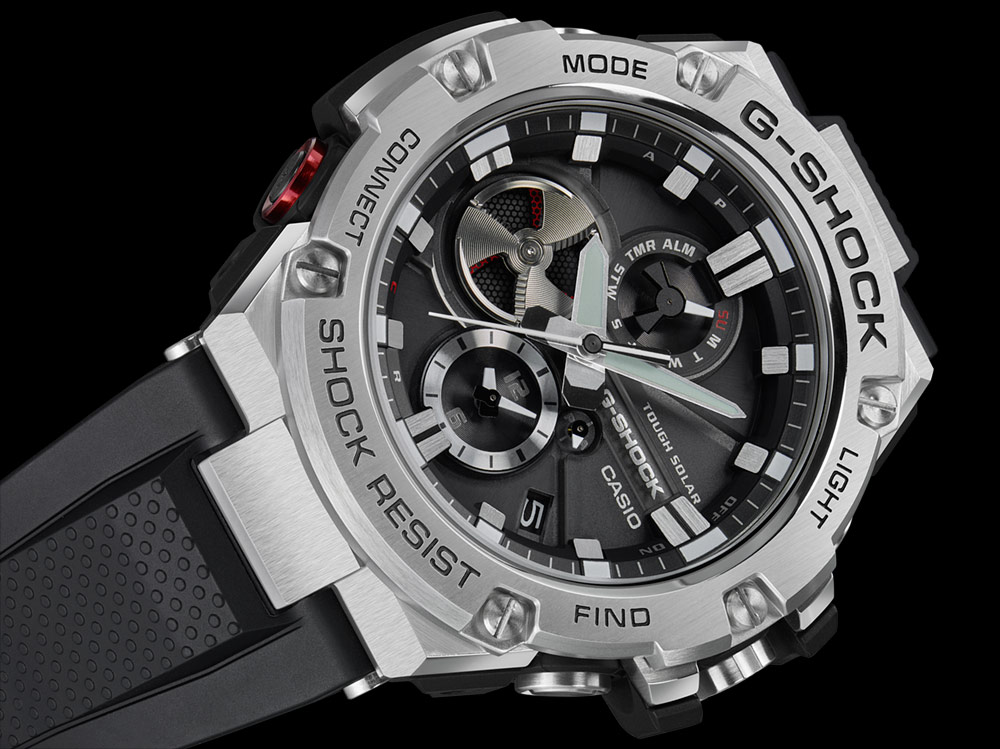
In addition to the steel models, is a more expensive “special edition” version, the GSTB100X-1A, with a matte black coated steel case, carbon fiber bezel, and sapphire crystal. The brand says that the bezel’s “Nanoalloy” that uses 40 layers of carbon fiber is particularly lightweight and shock-resistant. Besides this special edition and the two models that differ only in bracelet versus strap, there is a fourth secret model – that I discovered! Ok, what I mean is that it wasn’t announced to us alongside the others and currently (at time of writing) seems to appear only on the Japanese website, so it might be a domestic-only model. This GST-B100D-1A9 model is steel on a bracelet, with gold accents, and it is priced the same in Japan as the steel-and-bracelet model shown here [Update October 18, 2017: The gold accented GSTB100D-1A9 has been announced for the US and will be available in November 2017 for a price of $400. Image included in the gallery below.].
The Casio G-Shock G-Steel GSTB100-1A on the rubber strap is priced in USD at $320, the Casio G-Shock G-Steel GSTB100D-1A with steel bracelet is $400, and the special edition Casio G-Shock G-Steel GSTB100X-1A is priced at $700. gshock.com

